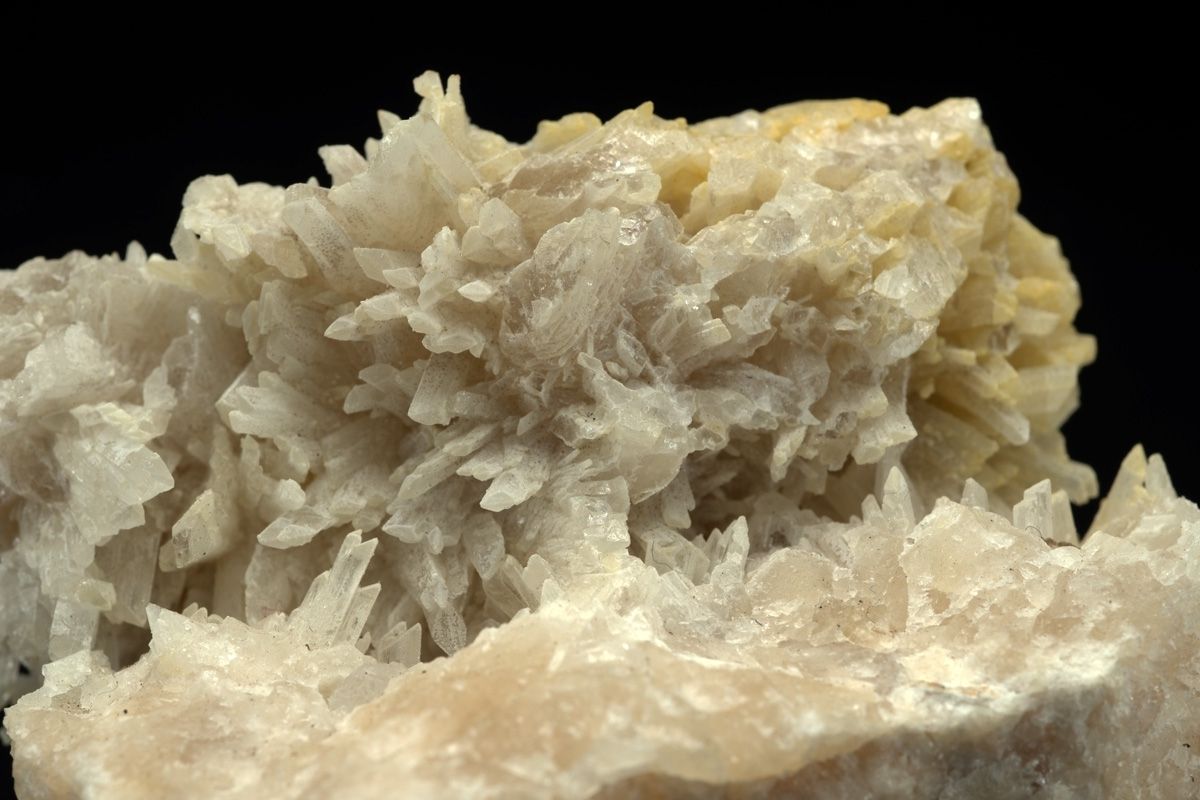
Barytocalcite is a rare mineral that often intrigues both geologists and collectors. Ever wondered what makes this mineral so special? Barytocalcite is a barium calcium carbonate, which means it contains both barium and calcium elements. Found in hydrothermal veins, it often forms in low-temperature environments. Its unique crystal structure and vibrant colors make it a sought-after specimen. Did you know it was first discovered in the 19th century? This mineral is not just a pretty face; it has practical uses too. From its role in scientific research to its presence in various geological formations, barytocalcite offers a fascinating glimpse into the Earth's natural wonders. Ready to learn more? Let's dive into 30 intriguing facts about this captivating mineral!
Key Takeaways:
- Barytocalcite is a rare mineral with barium and calcium, found in places like England, the US, and Germany. It glows under UV light and has unique properties, making it popular among mineral enthusiasts.
- Barytocalcite is a special mineral with a unique chemical formula and distinctive properties. It can be found in specific geological environments and is used in industrial applications for barium and calcium.
What is Barytocalcite?
Barytocalcite is a fascinating mineral that combines elements of barium and calcium. It is known for its unique properties and striking appearance. Let's dive into some intriguing facts about this mineral.
- Barytocalcite is a rare mineral that belongs to the carbonate group.
- Its chemical formula is BaCa(CO3)2, indicating it contains barium, calcium, and carbonate ions.
- This mineral typically forms in hydrothermal veins, often associated with lead and zinc ores.
- Barytocalcite was first discovered in 1824 in the Alston Moor District of Cumbria, England.
- It is named after its chemical composition, combining "baryto" (barium) and "calcite" (calcium carbonate).
- The mineral usually appears in white, colorless, or pale shades of yellow and green.
- Barytocalcite crystals are typically prismatic, tabular, or needle-like in shape.
- It has a Mohs hardness of 4, making it relatively soft compared to other minerals.
- The mineral exhibits perfect cleavage in one direction, which means it can easily split along a flat plane.
- Barytocalcite has a specific gravity of 3.64, which is higher than average for carbonate minerals.
Where Can You Find Barytocalcite?
Barytocalcite is not commonly found everywhere. Its occurrence is limited to specific geological environments. Here are some notable locations where barytocalcite can be found.
- The Alston Moor District in Cumbria, England, is the type locality for barytocalcite.
- It is also found in the Caldbeck Fells area of Cumbria, England.
- In the United States, barytocalcite has been discovered in the Sterling Hill Mine in New Jersey.
- The mineral can be found in the Harz Mountains of Germany.
- Barytocalcite has been reported in the Tsumeb Mine in Namibia.
- It is also present in the Lavrion District of Greece.
- The mineral occurs in the Kongsberg silver mines of Norway.
- Barytocalcite has been found in the Långban mines of Sweden.
- It is also present in the Santa Eulalia District of Chihuahua, Mexico.
- The mineral can be found in the Broken Hill District of New South Wales, Australia.
Unique Properties of Barytocalcite
Barytocalcite possesses several unique properties that make it stand out among other minerals. Here are some of its distinctive characteristics.
- Barytocalcite is fluorescent under ultraviolet light, typically glowing a pale blue or white.
- The mineral is birefringent, meaning it splits light into two rays, creating a double image when viewed through a polarizing microscope.
- Barytocalcite has a vitreous to pearly luster, giving it a shiny appearance.
- It is soluble in hydrochloric acid, which can help in identifying the mineral.
- The mineral can form pseudomorphs, where it replaces another mineral while retaining the original mineral's shape.
- Barytocalcite can exhibit twinning, where two crystals grow together in a symmetrical manner.
- The mineral has a low thermal conductivity, meaning it does not easily transfer heat.
- Barytocalcite can be used as a source of barium and calcium in industrial applications.
- The mineral is often collected by mineral enthusiasts due to its rarity and unique properties.
- Barytocalcite is sometimes used in educational settings to teach students about mineral properties and identification.
The Final Word on Barytocalcite
Barytocalcite, a fascinating mineral, holds a unique place in the world of geology. Its distinctive crystal structure, dual composition of barium and calcium, and fluorescent properties make it a subject of interest for both scientists and collectors. Found primarily in regions like the UK and the US, this mineral is not just a geological curiosity but also a valuable resource in various industrial applications.
Understanding barytocalcite's formation process, physical characteristics, and uses can deepen our appreciation for the natural world. Whether you're a student, a hobbyist, or a professional geologist, knowing these facts can enhance your knowledge and spark further curiosity.
So next time you come across a piece of barytocalcite, you'll see more than just a rock. You'll recognize a remarkable mineral with a rich history and significant contributions to science and industry.
Frequently Asked Questions
Was this page helpful?
Our commitment to delivering trustworthy and engaging content is at the heart of what we do. Each fact on our site is contributed by real users like you, bringing a wealth of diverse insights and information. To ensure the highest standards of accuracy and reliability, our dedicated editors meticulously review each submission. This process guarantees that the facts we share are not only fascinating but also credible. Trust in our commitment to quality and authenticity as you explore and learn with us.
